No NFL Draft prospect is perfect
NFL Draft discourse is often filled with too much sunshine and rainbows. Every prospect is the best thing since sliced bread and will be a franchise-altering coup for the team that drafts him.
We all know that isn’t the case. Most of the players drafted later this month will not live up to their draft status in the long run.
Every first-round pick will be marketed as a future star. In reality, the majority of them will not become stars, and a considerable chunk of them won’t even become starter-quality players.
Of the 128 players drafted in the first round from 2017-20, 78 of them (61%) have never made a Pro Bowl. Furthermore, 52 of them (41%) started eight games or fewer in the 2023 season.
Most of the players drafted after the first round will turn out to be backups. Of the 890 players drafted post-first-round from 2017-20, 693 of them (78%) started eight games or fewer in the 2023 season. Just 61 of them (7%) have made at least one Pro Bowl, and only 21 of them (2%) have made multiple Pro Bowls.
Bottom line: Most of the guys you’re hyping up are not going to be as good as you think.
With that in mind, it’s time to put on our hater caps and poke some holes in the New York Jets’ potential first-round draft targets. In all likelihood, at least half of these guys aren’t going to be great players. So let’s try to get ahead of the game and identify the weaknesses that will ultimately cause them to be less productive in the NFL than people think.
Since I’m an analytics-minded guy, we’re going to do this from a statistical perspective. Going solely off the numbers on paper, here are the main weaknesses in the profiles of New York’s top draft targets.
WR Malik Nabers: Hands
Malik Nabers’ hands aren’t “bad” by any stretch, but some of his hands-related numbers aren’t very impressive for a likely top-6 pick.
In 2023, Nabers was credited with five drops. He made 89 receptions, putting his drop rate at 5.4%. While it’s nowhere close to a poor rate, it also doesn’t stand out as elite when stacked against other high-volume wide receivers in college football. It ranked 18th-lowest among the 43 FBS wide receivers with at least 100 targets.
On top of that, Nabers wasn’t elite at contested catches, grabbing 10-of-22. His 45.5% contested catch rate was 25th among the 43 wide receivers with at least 100 targets. As we broke down in a previous article, a sub-50% contested catch rate in your final college season has not been a good sign for recent first-round wide receivers.
To be fair, Nabers was much better at contested catches in 2022, snagging 13-of-21 (61.9%). However, he was also poor as a freshman (4-of-11, 36.4%). His career rate is 50%.
Remember, draft prospects need to be graded on a curve – especially the high first-round prospects. All of these guys were great in college, or else we wouldn’t be talking about them. I expect you to dominate in college.
But if there’s a particular area where you’re not quite dominant, that’s a red flag as you prepare for a major leap in competition at the next level. Every aspect of a prospect’s game is going to take a step down in the NFL (production-wise). Elite skills become good. Good skills become average. Average skills become subpar.
If Nabers doesn’t live up to his billing in the NFL, perhaps his hands will be the reason why.
WR Rome Odunze: Contested catch reliance
Rome Odunze’s statistical resume is pretty spotless across the board. It’s hard to poke holes in his analytical profile.
If there’s one thing that I think we’ll look back on as a warning of impending struggles, it’s probably his reliance on contested catches.
Odunze was pretty much unstoppable at contested catches in 2023, snagging 21-of-28 (75%). Contested catch success has been a strong indicator of future success for first-round wide receivers in recent years, so this is a promising sign.
However, making contested catches against NFL cornerbacks is far different than doing it against Pac-12 cornerbacks. While Odunze is so splendid at contested catches that it seems likely he will translate his success to the league, it’s not guaranteed until we see it. Odunze could just as easily struggle to make contested catches in the NFL. We simply never know how a guy is going to handle the jump in competition until he takes the field, no matter how special he looked in college.
Because of this, Odunze’s reliance on contested catches is a red flag to keep in mind. Joe Blewett discussed this plenty in his film review of Odunze. While he was successful at many different route types, it was mostly because he was just flat-out dominating his opponents at the catch point. Odunze’s route-running appeared raw on film despite the positive results.
In the NFL, if he cannot dominate on contested catches to the same level of efficiency, the other parts of Odunze’s game will be placed in the spotlight. If Blewett’s review is any indication, the results won’t be pretty until he makes serious improvements to his route running technique.
Odunze relied on contested targets at a fairly high rate in 2023. His total of 28 contested targets tied for ninth-most in the country among wide receivers. This made up 20% of his targets, a rate that would rank seventh-highest among the 21 wide receivers drafted in the first round from 2018-22. It suggests that he wasn’t doing an incredible job of generating wide-open targets and therefore had to rely on a relatively high rate of contested targets to be successful.
Contested target frequency has not been a strong predictor of future NFL success. This is because we have seen plenty of high-contested-target prospects who went on to thrive in the NFL. However, we have also seen some examples of first-round wide receivers who relied on contested targets and went on to bust in the NFL because of poor route running, which was foretold by their contested catch reliance. It’s a mixed bag.
Here are the first-round wide receivers from 2018-22 who had a contested target rate of at least 18% in their final college season:
- N’Keal Harry: 32.7%
- Ja’Marr Chase: 26.4%
- Henry Ruggs: 25%
- Drake London: 21.8%
- Jalen Reagor: 21.6%
- D.J. Moore: 20.5%
- Rome Odunze: 20%
- Treylon Burks: 18.2%
- Rashod Bateman: 18.2%
You have two stars in Ja’Marr Chase and D.J. Moore, while Drake London is a good player whose numbers have suffered in a poor situation. Other than that, five of the other eight players are busts.
Odunze’s wild success on contested catches sets him apart from those players. None of them had a contested catch rate as high as Odunze’s 75%. So, this might not end up mattering. Still, if we had to choose one red flag for Odunze, this is it.
OT Joe Alt: Average length at a ridiculous height
Like Odunze, Joe Alt’s analytical resume is difficult to critique. On paper, he’s got it all.
Alt’s pass protection numbers are elite, and he did it while playing a high frequency of true pass sets. He was a highly regarded run blocker who graded well on gap concepts, which bodes well for his potential fit with the Jets. He rarely committed penalties. He crushed the combine with a 5.05 forty time (the most important drill for offensive tackles).
To find holes in Alt’s game, you have to look closely at his film, and that’s where we again turn to the great Joe Blewett.
As Blewett described on today’s Cool Your Jets podcast, one of Alt’s biggest issues on film is his leverage – which largely occurs as a consequence of his ridiculous height (6′ 8⅝”).
“A lot of Alt’s problems come [because] he’s so damn tall,” Blewett told us. “At a point, yeah, being tall is great for length, but I don’t think his arm length is that great. It’s like 34 inches. So he’s kind of tall but [has] shorter arms relative to his body size. The problem comes – it’s like, people think about leverage in terms of just your helmet being below a guy. It’s really your hips, like, whose hips are lower? And Alt’s hips are so damn high it’s really, really hard for him to get under guys. So I see him struggling at the NFL level with power.”
Standing at 6′ 8⅝”, Alt’s height places him at the 98th percentile all-time among tackle prospects. However, his 34.25-inch arm length only ranks at the 58th percentile – barely above average. The disparity between his height and arm length causes the issues that Blewett is describing.
One recent highly-drafted prospect with a similar discrepancy was Evan Neal, who stood at 6′ 7½” with 34-inch arms. Chosen seventh overall by the Giants in 2022, Neal has struggled immensely in the NFL so far.
Alt is one of those guys whose statistical resume will not tell the whole story since he was able to physically overpower his opponents on the way to spotless production. You have to look closer at his film to find the technical red flags that might come back to haunt him in the NFL. Blewett revealed one of them, and Alt’s measurements back it up. Keep an eye on his leverage in the NFL.
OT Olu Fashanu: Tiny hands
Olu Fashanu is another prospect who you can hardly criticize statistically. He didn’t allow any sacks or hits last year and commits penalties at a low rate. While his run blocking stats aren’t elite, they are still quite good – although the film says otherwise.
Even though Pro Football Focus rated Fashanu with a 70.5 run blocking grade, ranking in the 83rd percentile among qualified FBS tackles, Joe Blewett countered with a plethora of run blocking weaknesses in his scouting report of Fashanu:
- Hands shoot from low too often in run game
- Doesn’t roll hips in run game
- Can struggle vs. NFL power
- Doesn’t finish blocks
- Lacks nasty
- High-waisted, which hurts in leverage game
- Splashed in run game too often
- Needs to bring feet into run blocks
- Doesn’t always “cover” play side gap in run game
The stats seem to disagree with the film on Fashanu’s run blocking. However, one aspect of his physical profile could severely compound the technical issues that show up on his film: his historically small hands.
Fashanu’s hands were measured at 8.5 inches. On Mockdraftable, this is listed as the 0th percentile all-time for offensive tackle prospects. It’s the smallest measurement for a tackle prospect since 2004, when Ohio State’s Shane Olivea, an eventual seventh-round pick of the Chargers, had the same mark.
If Fashanu was struggling as a run blocker against college opponents with those tiny mitts, just imagine what’s going to happen when he tries to establish a grip on guys like Chris Jones and Quinnen Williams in the NFL.
The history of tackles with hands this small is not promising. Here are the tackles over the past five drafts who measured with hands smaller than 9.5 inches:
- 2023: Jaelyn Duncan (9.38)
- 2023: Carter Warren (9.13)
- 2023: Darnell Wright (9.00)
- 2023: Connor Galvin (9.00)
- 2022: Austin Decelus (9.25)
- 2022: Dare Rosenthal (9.00)
- 2021: Chandon Herring (9.25)
- 2021: Dillon Radunz (9.125)
- 2020: Tony Brown (9.25)
- 2020: Ezra Cleveland (9.00)
- 2020: Ben Bartch (9.00)
- 2019: Kendall Baker (9.375)
- 2019: Jackson Barton (9.25)
- 2019: Alex Bookser (9.125)
Not exactly a star-studded list, is it? Granted, most of those prospects were drafted much later than Fashanu will be. Still, if Fashanu becomes a star, he’d be an outlier.
Over the last 10 drafts, only three tackle prospects with hands smaller than 9.5 inches have earned any post-season honors:
- Brian O’Neill, Vikings, 2018 second-round pick, 9.375 inches – 2021 Pro Bowl
- Garett Bolles, Broncos, 2017 first-round pick, 9.375 inches – 2020 Second-Team All-Pro
- Taylor Lewan, Titans, 2014 first-round pick, 9.25 inches – 3x Pro Bowl
OT Taliese Fuaga: Penalties
Taliese Fuaga had eight penalties in 12 games this past season. It tied him for the 24th-most penalties among all FBS tackles and the 11th-most among Power 5 tackles.
Penalty issues from college linemen are scary. Many penalties occur because the player was beaten and resorted to penalizing to mitigate the damage. If this happens often against college defenders, it will only happen more often against NFL defenders until the player improves his technique.
Unfortunately, I could not locate a breakdown of exactly what type of penalties Fuaga was called for. Nonetheless, if he ends up being penalty-prone in the NFL, it will not be a surprise considering he already struggled with it against lesser competition.
OT JC Latham: Pass protection vs. ranked opponents
Overall, JC Latham offers an excellent profile. He faced a high frequency of true pass sets and was successful in those situations. He ran gap plays at a high rate and graded well on them.
When digging into Latham’s numbers, the biggest red flag that jumped out to me was his pass protection against ranked opponents (i.e. one of the consensus top-25 teams in the nation at that point in time). Latham was noticeably more susceptible to getting beat when facing quality teams.
In eight games against non-ranked opponents, Latham allowed just three pressures on 243 pass-blocking snaps (1.2% pressure rate). However, in six games against ranked opponents, Latham allowed 11 pressures on 200 pass-blocking snaps (5.5%). For perspective, that is slightly higher than the average pressure rate among FBS tackles in 2023, which was 5.2% (although I’m certain that would be higher if you isolated games against ranked teams). So, he essentially produced like an average college tackle when facing ranked teams.
Most notably, Latham allowed five pressures on 65 pass-blocking snaps (7.7%) across Alabama’s final two games: the SEC championship against top-ranked Georgia and the Rose Bowl against newly top-ranked Michigan.
Penalties are another red flag with Latham, as he committed 18 of them over the past two seasons. On the bright side, he showed progress in 2023, cutting down to seven penalties after committing 11 in 2022. Latham also played 174 more snaps than Fuaga did, so while they’re only separated by one penalty in total, Latham’s penalty frequency was actually much lower (8.0 per 1000 snaps for Latham, 11.4 per 1000 snaps for Fuaga).
The drastic production fall-off against quality opponents is what scares me the most. If Latham struggles against NFL competition, we’ll be able to look back and say we could’ve seen it coming based on his middling pass protection in a six-game sample against ranked teams.
OT Troy Fautanu: Lack of run blocking dominance
Pro Football Focus scored Troy Fautanu with a run blocking grade of just 62.6 in 2023, ranking 136th out of the 279 FBS tackles who played at least 200 run blocking snaps. That’s the 51st percentile – highly underwhelming for a potential first-round pick.
This concerns me because PFF’s run blocking grade is a metric that NFL draft prospects can easily thrive in based solely on their physical advantage against college opponents. Even if your technique isn’t perfect, you can impress the PFF graders by racking up highlight-reel pancake blocks on guys who are simply too small.
Taliese Fuaga did this, as he had the best run blocking grade in the country even with imperfect technique. What this tells me is that, while we know Fuaga needs technical refinement to succeed in the NFL, he at least proved he is on a different level physically compared to college competition.
Fautanu could not pull this off, and it’s especially concerning because of his age. He was a redshirt senior in 2023 and will turn 24 years old this October. As an older prospect, he should have been steamrolling opponents last year, but his run blocking grade suggests he was just another guy amongst his collegiate peers.
Fautanu has a great resume in pass protection, but his shaky run blocking reputation is certainly a red flag.
TE Brock Bowers: Reliance on schemed production
I wrote a whole article dedicated to this topic, so check that out if you want the full scoop.
To sum it up, Bowers caught 48% of his 2023 receptions behind the line of scrimmage. It would be the highest rate for a first-round tight end as far back as data is available (since 2015). The only other first-round tight ends since 2015 who had a rate higher than 30% in their final college season were O.J. Howard and David Njoku.
Joe Douglas must decide which red flags are manageable, and which he believes are a sign of things to come
Which player’s red flag scares you the most? Which player’s red flag is the most manageable?
Personally, I think Nabers’ hands are probably the most manageable red flag. Surprisingly enough, star receivers in the NFL often don’t rank all that well in drops and contested catch rate. In 2023, the top three players in drops were Puka Nacua (13), Tyreek Hill (9), and Davante Adams (9). The two things that really separate star receivers from the pack are route running and YAC. Nabers has both in spades.
The most daunting red flag might be Fashanu’s hands. While many of the issues we discussed today can be fixed, this one cannot. The track record of small-handed tackles is not promising, and it’s a limitation Fashanu will have to overcome for his entire career.
How about Joe Douglas? What does he think of these issues? Which ones might scare him away, and which ones might he be willing to overlook?
It’s all speculation, but I don’t think Douglas will mind the physical question marks with Alt and Fashanu. Douglas already has a track record of not caring about size deficiencies in high-ranked offensive line prospects.
In 2021, Douglas traded up to draft Alijah Vera-Tucker despite his extremely short arms (32.125 inches, 8th percentile all-time for guards). Last year, he drafted Joe Tippmann in the second round despite Tippmann having a very similar height/length disparity to Alt. Tippmann’s 6-foot-6 height ranks in the 97th percentile all-time for centers, but his 32.75-inch arms are in the 53rd percentile.
Fautanu has been viewed by some as a Douglas guy because of his potential positional versatility, but I’m not sure Douglas wants someone who has not proven he can maul in the run game. Look at his additions this offseason. In John Simpson, Morgan Moses, and Tyron Smith, Douglas went for players who bring the nasty. Well, Smith brings pretty much everything as an all-time great (he could’ve fit an athletic line as well), but Simpson and Moses certainly lean toward power and grit over agility and athleticism.
It feels like Douglas is trying to establish an intimidating identity for this offensive line. If Fautanu’s run blocking grade is an indicator that Douglas will watch his film and conclude he could not overpower college opponents at 23 years old, I don’t see Douglas viewing him as a good fit for this offensive line’s newfound vision.
In less than two weeks, we will find out what kind of weaknesses the Jets are willing to deal with.

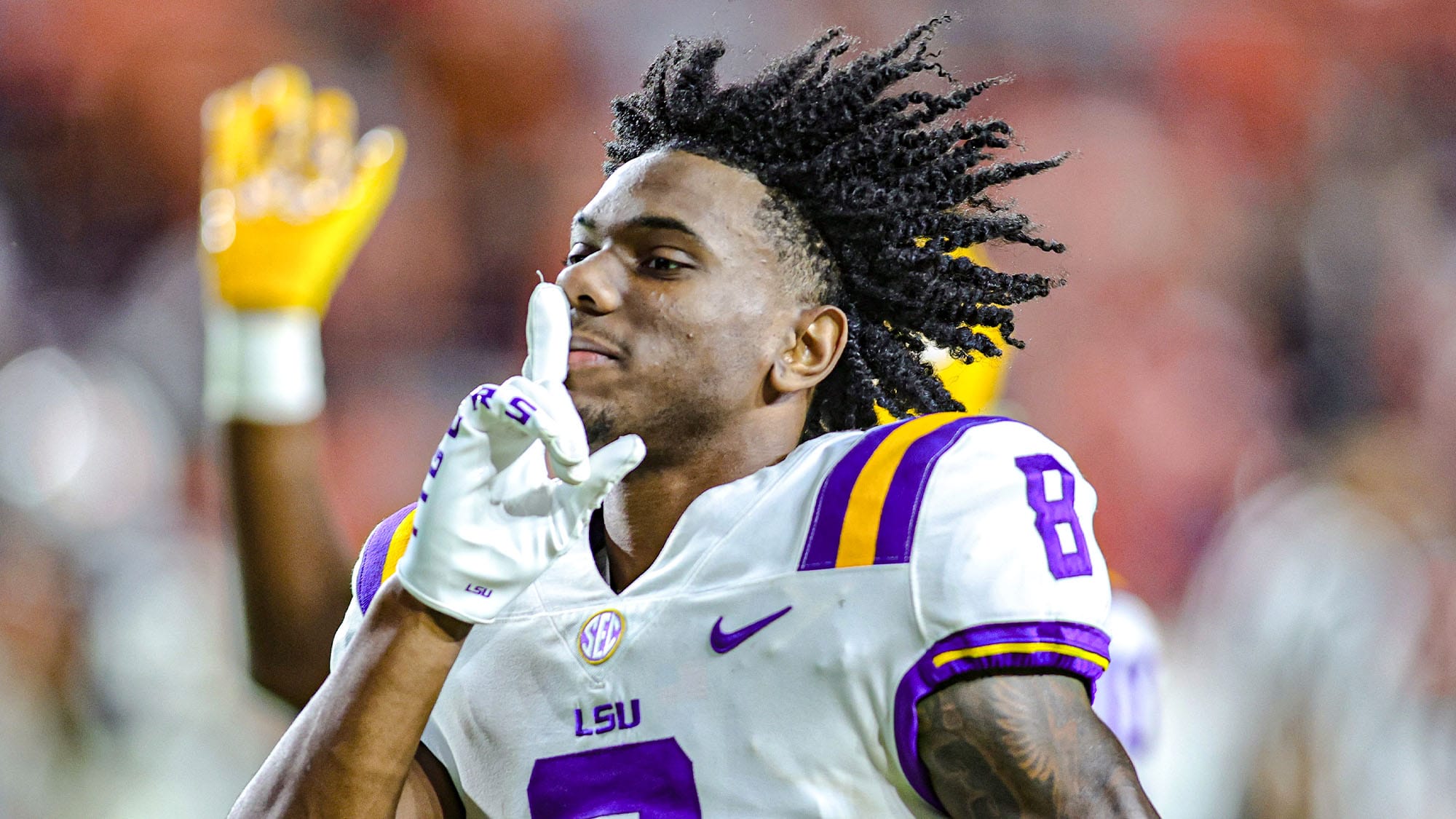




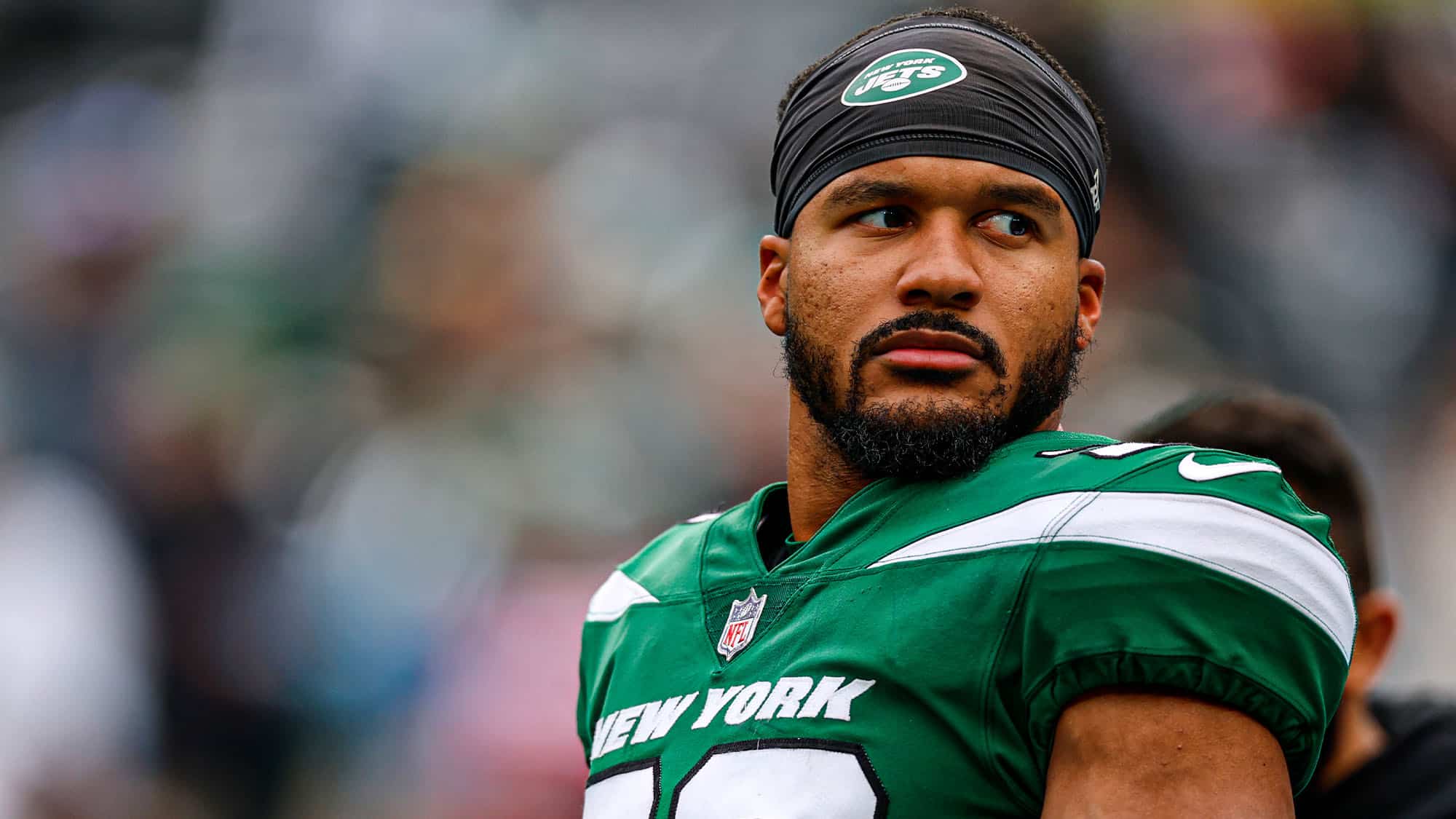
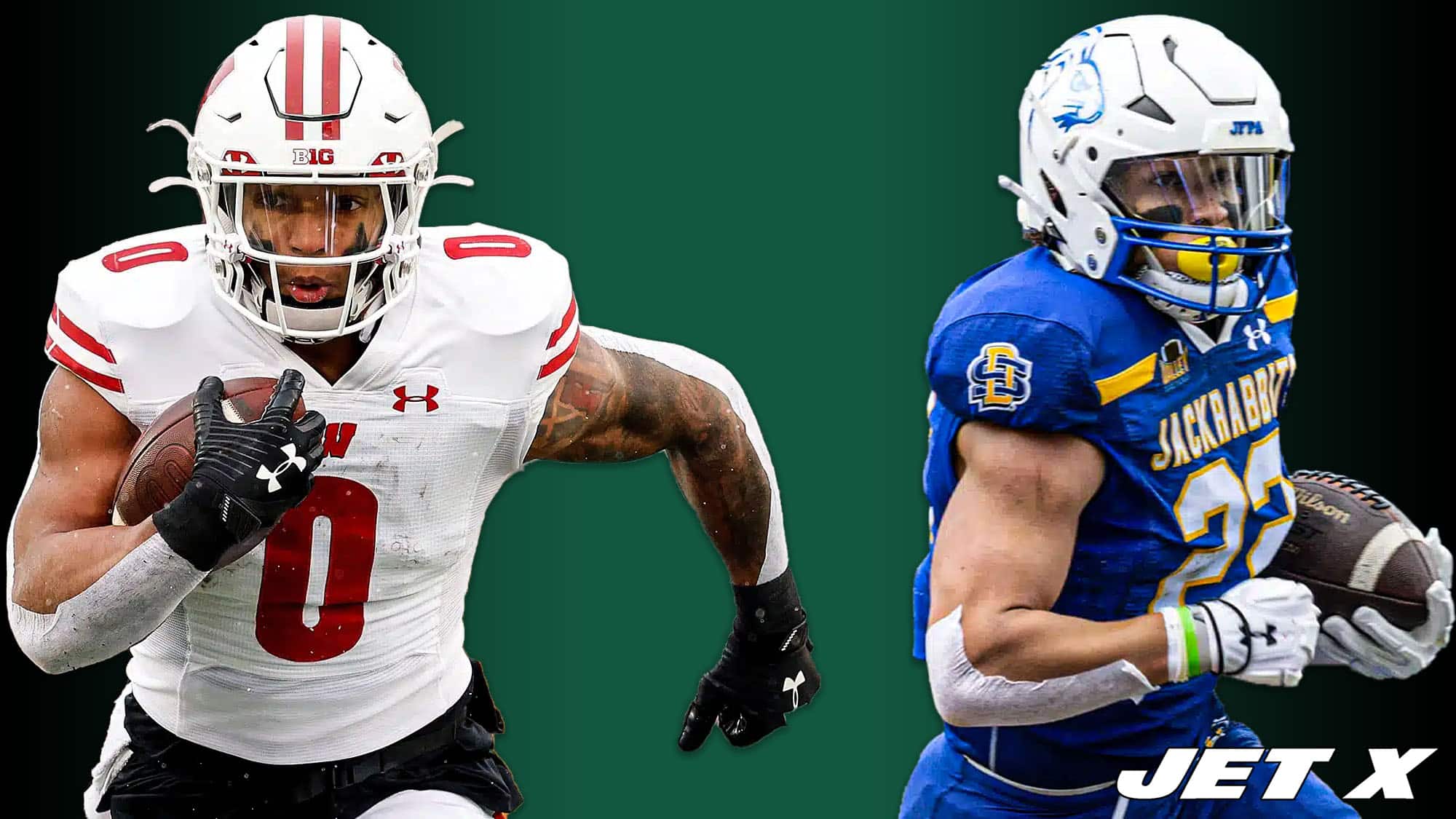

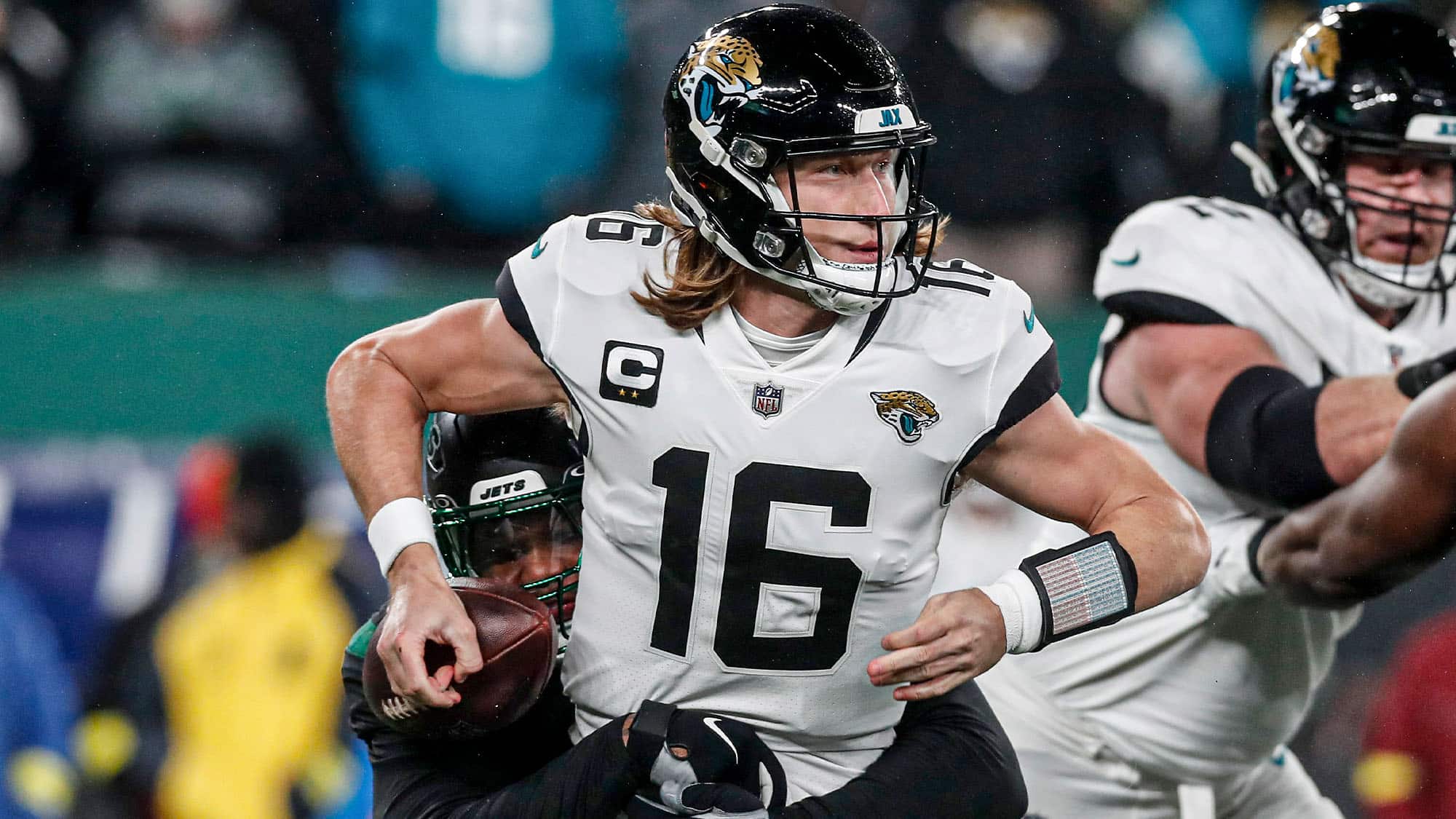
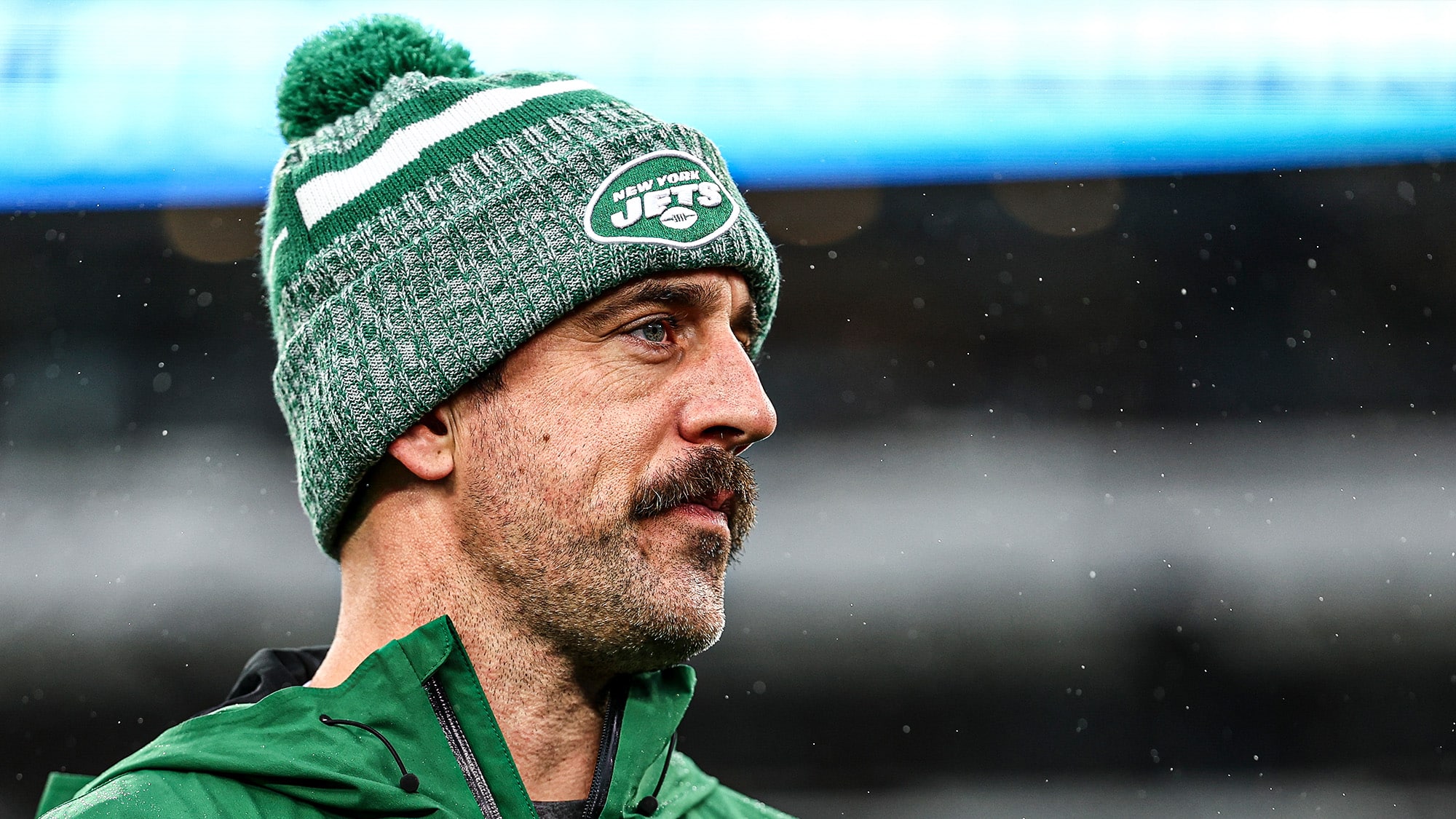
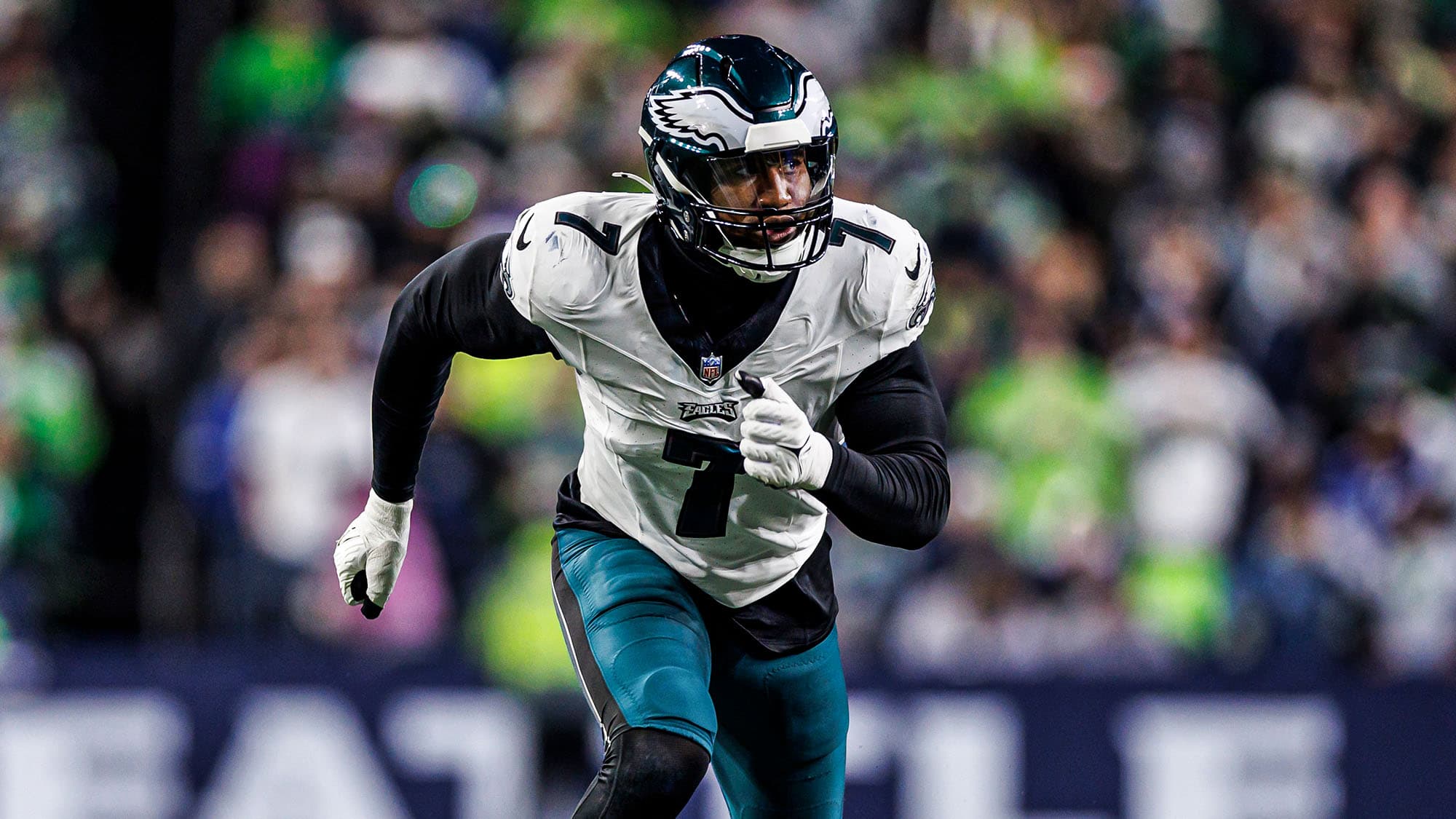
Lacking nasty is the biggest red flag to me, like blewett was saying in the pod. Thats something you cant teach. You need to be a dog in the trenches, i dont care if it leads to a couple of more flags, its well worth it. That said, if it came down to fuaga vs foshanu, id not even hesitate to take fuaga. He can work on his technique and practice keeping his hands on his opponent instead of tossing them. Like ben mentioned, dudes hitting the jets qbs late and nobody doing anything about it, unacceptable, embarrassing. Cant let that happen ever again.
You couldn’t be more right about the “nasty.” It’s time, they start pushing people around.
The hype train with the draft came off the tracks once Jimmy Johnson’s value chart become known publicly. Teams need to spin, but the networks have just started making it up as they go along. You’re right, they all have holes/flaws. It’s a projection, not a statement of fact and I think we as fans/media have become overly critical of GM’s etc.
This statement was most interesting: “Of the 128 players drafted in the first round from 2017-20, 78 of them (61%) have never made a Pro Bowl. Furthermore, 52 of them (41%) started eight games or fewer in the 2023 season.
Most of the players drafted after the first round will turn out to be backups. Of the 890 players drafted post-first-round from 2017-20, 693 of them (78%) started eight games or fewer in the 2023 season. Just 61 of them (7%) have made at least one Pro Bowl, and only 21 of them (2%) have made multiple Pro Bowls.”
I’d like to see Joe Douglas’ draft compared to THESE numbers rather than “you are what your record says you are” I have no idea how he’d fare but it would be interesting to know.
great points